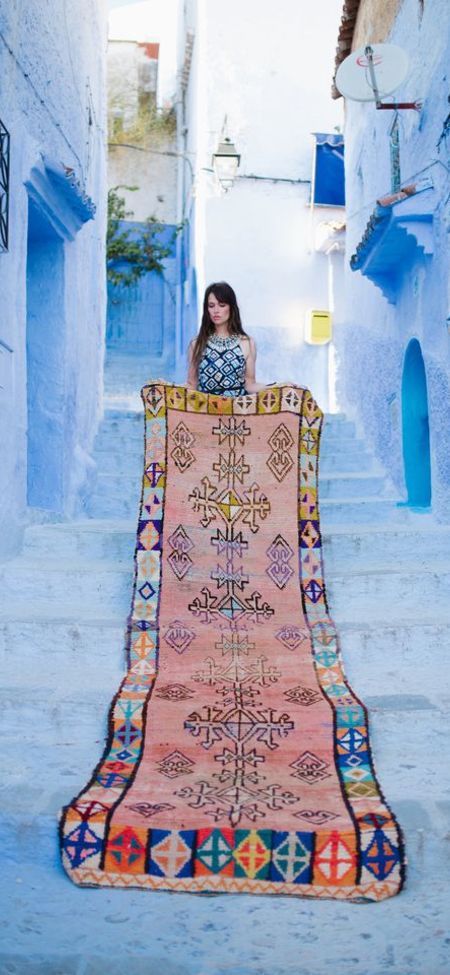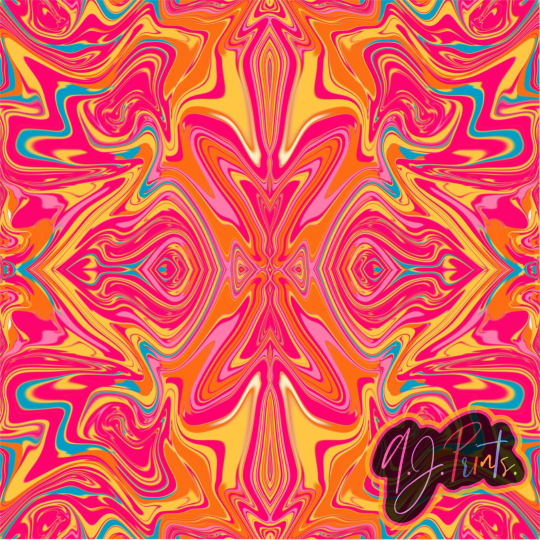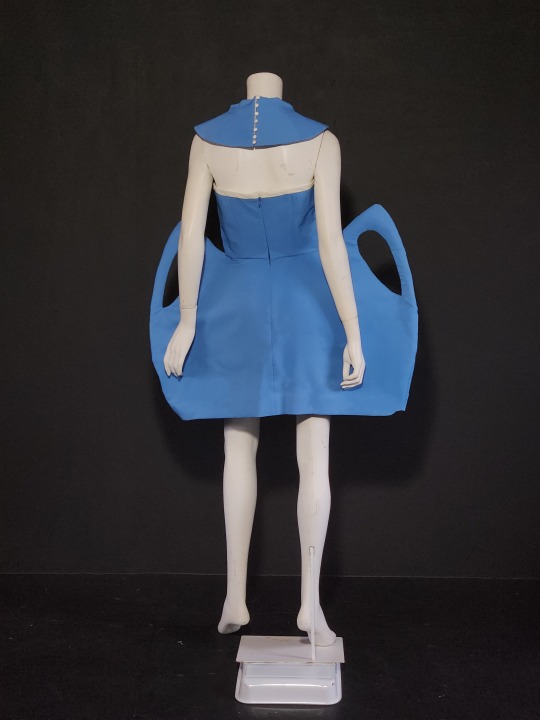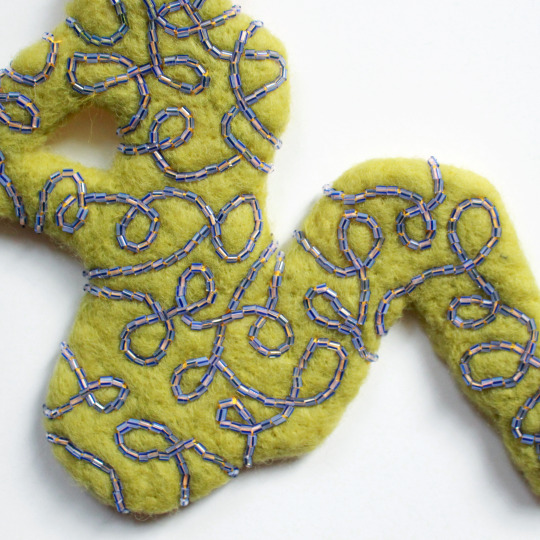#TextileDesigns
Explore tagged Tumblr posts
Text
Exploring the Cost Dynamics: Non-Woven Fabric vs. Traditional Woven Fabric

Non-woven fabric has emerged as a popular choice in various industries due to its versatility, durability, and cost-effectiveness. As a leading provider of fabric solutions, Mavazi Fabrics understands the importance of cost considerations for our clients. In this article, we'll explore how the cost of non woven fabric manufacturer
compares to traditional woven fabric and the factors that influence this comparison.
1. Production Process
One of the primary factors influencing the cost of non woven fabric manufactureris the production process. Non-woven fabrics are manufactured using a process that does not involve weaving or knitting yarns together. Instead, fibers are bonded together mechanically, chemically, or thermally. This results in a simpler and more streamlined manufacturing process compared to traditional woven fabric, which requires yarn spinning, weaving, and finishing. The reduced complexity of the production process often translates to lower production costs for non woven fabric manufacturer.
2. Raw Material Costs
The cost of raw materials also plays a significant role in determining the overall cost of non-woven fabric. Non-woven fabrics can be made from a variety of materials, including natural fibers such as cotton and wool, synthetic fibers such as polyester and polypropylene, and recycled materials. The availability and cost of these raw materials can vary depending on factors such as market demand, production capacity, and geographical location. In general, non woven fabric manufacturer made from synthetic fibers tend to be more cost-effective compared to those made from natural fibers.
3. Labor Costs
Labor costs are another important consideration when comparing the cost of non woven fabric manufacturer to traditional woven fabric. Non-woven fabric manufacturing typically requires less labor compared to weaving or knitting processes. This is because non-woven fabrics can be produced using automated machinery and require fewer manual interventions. As a result, labor costs associated with non woven fabric manufacturer production are often lower, contributing to overall cost savings.
4. Energy Consumption
Energy consumption during the manufacturing process is another factor that influences the cost of non-woven fabric. Non-woven fabric production generally requires less energy compared to traditional weaving or knitting processes. This is because non-woven fabric manufacturing involves fewer mechanical motions and heating processes. As a result, non woven fabric manufacturer production can be more energy-efficient, leading to lower operating costs and reduced environmental impact.
5. Customization and Versatility
Non-woven fabrics offer greater customization and versatility compared to traditional woven fabrics. They can be engineered to meet specific performance requirements, such as strength, absorbency, and filtration efficiency. This customization capability allows non-woven fabric manufacturers to tailor their products to the unique needs of their clients, potentially adding value and justifying higher costs compared to traditional woven fabrics.
In conclusion, the cost of non woven fabric manufacturer compared to traditional woven fabric depends on various factors, including the production process, raw material costs, labor costs, energy consumption, and customization capabilities. While non-woven fabrics often offer cost advantages due to their simpler production process and lower labor and energy costs, the final cost comparison may vary depending on specific requirements and market conditions. As a trusted provider of fabric solutions, Mavazi Fabrics offers a wide range of non-woven fabrics tailored to meet the diverse needs of our clients while ensuring cost-effectiveness and quality.
#nonwovenfabric#manufacturer#fabricengineer#innovativematerials#textileindustry#sustainableproducts#technicaltextiles#manufacturingexcellence#madeinUSA#materialsourcing#productionprocesses#ecofriendlytechnology#qualityassurance#industrialmaterials#textiledesigns#nonwovenmaterials#advancedmanufacturing#productionefficiency#environmentallyfriendlyinfos .
2 notes
·
View notes
Text
Dynamics of the Textile Dye Market in Latin America
The textile dye market in Latin America stands at a pivotal juncture, poised for substantial growth and transformation in the coming years. As of 2023, the market for textile dyes in the region was valued at approximately USD 2,872.03 million, underscoring its integral role in the vibrant textile and apparel industry. Projections suggest a steady growth trajectory with an estimated compound annual growth rate (CAGR) of 4.50% from 2024 to 2032. By 2032, the market is expected to expand significantly, reaching a value of USD 4,268.10 million, driven by technological advancements, sustainability initiatives, and evolving consumer preferences.

Catalysts of Market Expansion
Textile dyes serve as essential components in the textile manufacturing process, imparting color, vibrancy, and aesthetic appeal to fabrics and garments. The growing demand for personalized and eco-friendly textile products has spurred innovation within the textile dye sector. Manufacturers are increasingly focusing on developing sustainable dyeing solutions that minimize environmental impact, reduce water consumption, and enhance the recyclability of textile materials.
Moreover, advancements in dye chemistry, formulation techniques, and application technologies are enabling textile producers to achieve superior color fastness, durability, and color consistency across diverse fiber types and fabric substrates. These innovations not only cater to the stringent quality standards of the textile industry but also meet regulatory requirements pertaining to chemical safety and environmental sustainability.
Regional Dynamics and Market Trends
Latin America's textile dye market exhibits diverse regional dynamics influenced by economic growth, industrialization, and consumer behavior. Countries such as Brazil, Mexico, Argentina, and Colombia emerge as key players in the region, driven by a thriving textile manufacturing base and increasing investments in textile infrastructure. Urbanization, rising disposable incomes, and shifting fashion trends contribute to the growing demand for dyed textiles across both domestic and export markets.
Furthermore, partnerships between textile manufacturers, dye suppliers, and academic institutions foster collaborative research and development initiatives aimed at advancing dyeing technologies, optimizing production processes, and addressing emerging market needs. Strategic alliances and joint ventures enhance innovation capabilities, market competitiveness, and sustainability practices within the textile dye industry.
Sustainability Initiatives and Regulatory Landscape
Sustainability remains a critical focus area for stakeholders in the textile dye market. Initiatives to reduce carbon emissions, adopt renewable energy sources, and implement closed-loop dyeing systems are gaining traction, driven by consumer awareness and regulatory pressures. Certifications such as OEKO-TEX® Standard 100 and Global Organic Textile Standard (GOTS) validate the eco-friendly credentials of textile dyes, reassuring consumers of product safety and environmental stewardship.
Moreover, regulatory frameworks governing chemical usage and wastewater discharge are prompting textile dye manufacturers to invest in cleaner production technologies and wastewater treatment facilities. These initiatives contribute to mitigating environmental pollution and promoting sustainable practices throughout the textile value chain.
Future Outlook and Strategic Imperatives
Looking ahead, the textile dye market in Latin America is poised for dynamic growth driven by innovation, sustainability, and market diversification. Manufacturers and stakeholders must continue to prioritize research and development, adopt sustainable manufacturing practices, and embrace digital technologies to capitalize on emerging opportunities and navigate market challenges effectively.
By leveraging collaborative partnerships, embracing circular economy principles, and addressing evolving consumer expectations for sustainable and responsibly produced textiles, the industry can foster resilience, innovation, and long-term growth in the competitive global marketplace.
In conclusion, the textile dye market in Latin America represents a convergence of technological innovation, environmental stewardship, and market dynamics shaping the future of textile coloration. As stakeholders collaborate to drive sustainable growth and meet evolving market demands, the region stands poised to play a pivotal role in the global textile dye industry landscape.
1 note
·
View note
Text
Sri Shakthi Tex offers a treasure trove of breathable and eco-friendly fabrics like organic cotton, linen, and rayon. These natural fibers not only drape beautifully but also keep you cool and comfortable throughout the workday.
#Sri Shakthi Tex#breathable and eco-friendly fabrics#organic cotton#natural fibers#SriShakthiTex#TextileInnovation#FabricArtistry#QualityTextiles#WeavingExcellence#TextileCraft#SustainableTextiles#EthicalFashion#WeavingTradition#TextileDesigns#ArtisanCraft#FabricInspiration#TextileIndustry#ModernWeaves#FashionFabric#FabricInnovation#TextileArt#HandloomMagic#QualityYarns#WeavingDreams
1 note
·
View note
Text
Semikah Textiles

Calling all textile enthusiasts. Join us on Pinterest as we dive into the captivating world of Semikah Textiles. Prepare to be amazed by the intricate patterns and fascinating stories woven into each fabric.
1 note
·
View note
Text
Semikah Textiles

Discover the incredible craftsmanship of Semikah Textiles as we delve into the history, techniques, and inspiration behind these mesmerizing English creations. Education meets creativity on Pinterest.
1 note
·
View note
Text
The story of a print…’All Tomorrow’s Futures’ fabric by The Monkey Puzzle Tree
8 notes
·
View notes
Text
Poppy Swirl…..
Digital Art created using, @procreateapp.



#artists on tumblr#artwork#digital art#digital illustration#patterndesign#design#fashion#surfacepattern#aesthetic#artistsofinstagram#digitaldesign#digitalartwork#brightcolors#colourful#artlicensing#fashiontumblr#designer#wallpaper#textiledesign#popart#popartvibes#colour#procreate#pinkart#pinkaesthetic
7 notes
·
View notes
Text
Textile Designer Resume Inspiration – Crafting Creativity into Career Success!
Ever wondered what it takes to build a standout career as a Textile Designer? 🧵✨ This resume example highlights essential skills, creative projects, and industry expertise needed to thrive in the world of textile and fabric design.
From creating intricate patterns to collaborating on large-scale production, see how a strong resume can bring your design story to life!
#TextileDesign#ResumeTips#CreativeCareers#FashionIndustry#DesignInspiration#kudoswall#airesumebuilder#ai resume#resume writing tips#ai resume builder
6 notes
·
View notes
Text



Some illustrations for an exhibition titled Chay Reds Ferrous Black at Museum of Art and Photography.
#priyasebastian#priyasebastianillustration#illustration#priyasebastianillustrations#priyasebastianillustrator#pastel#charcoal#palampore#textiledesign#indiantextiles#srilankantextiles#redandblack#museumofartanddesign#MAP#chayredsferrousblack
3 notes
·
View notes
Text

🐾✨ Nautical Dogs with a Twist ✨🐾
These quirky little fabric dogs are inspired by the iconic Staffordshire porcelain figurines — but with a bold, rebellious edge. 💥🐶
Stripes, bright colors, and unexpected details give them their own personalities — some sweet, some sassy, all one-of-a-kind. The front pup proudly wears its "AMOUR" beads, because love comes in all forms (even in stuffed dog form 😉).
Handmade chaos meets vintage inspiration — and I love it. Which one’s your favorite? 💫
#TextileArt#StaffordshireDog#HandmadeWithLove#NaiveArt#FanøIsland#VintageInspo#CraftyVibes#DIYMagic#SewingArt#WhimsicalCreations#QuirkyDecor#SoftSculpture#FabricDog#ArtDoll#TextileDesign#PunkCraft#NauticalStyle
3 notes
·
View notes
Photo

Ethnic art By Teti Bright Abstract, Ethnic Tags abstract, black, ethnic, green, pattern, red, shapes, waves
(via abstract black ethnic green pattern red shapes waves Abstract | Ethnic - fabric pattern design Ethnic art - MyDigitex)
#Ethnic#TetiBright#Abstract#abstract#black#ethnic#green#pattern#red#shapes#waves#mydigitex#textiles#textileprint#textileprinting#textiledesign#fashion#fabricstore#thefabricstudio#fabrics#fabricmarket#textilestudio#textileshop#surfacedesign#surfacepattern#surfacepatterndesign#patterns#patternprint#homedecoration#Prints
2 notes
·
View notes
Text
National Institute of Fashion Technology - [NIFT], Srinagar
National Institute of Fashion Technology (NIFT), Srinagar – Overview (800 Words)
The National Institute of Fashion Technology (NIFT), Srinagar is one of the newer additions to the prestigious NIFT network, established in 2016. Located in the heart of Kashmir, in the Budgam district, NIFT Srinagar has rapidly grown into a key center for fashion education in northern India. It combines the legacy of India’s textile heritage with modern design education, fostering a space where innovation meets tradition.
Academic Programs
NIFT Srinagar offers undergraduate and postgraduate programs in fashion and design disciplines:
Bachelor of Design (B.Des) with specializations in:
Fashion Design
Fashion Communication
Textile Design
Fashion and Lifestyle Accessories Design
Master of Fashion Management (MFM)
The curriculum is designed to blend theoretical knowledge with hands-on experience, encouraging creative thinking, technical proficiency, and business understanding. Students are exposed to a variety of workshops, studio practices, and real-world projects that prepare them for dynamic roles in the fashion industry.
Campus and Infrastructure
The NIFT Srinagar campus, spread across 16.5 acres in Ompora, Budgam, is equipped with state-of-the-art infrastructure. The academic block includes well-lit, modern classrooms and specialized studios for pattern making, garment construction, dyeing and printing, weaving, and more. The resource center includes an extensive library, digital learning spaces, and access to design materials from around the world.
A design studio fosters creative development, while labs such as the knitwear and textile labs provide space for experimentation. The campus is fully Wi-Fi enabled and has advanced IT infrastructure to support learning.
There are also facilities for extracurricular engagement, including an auditorium, an amphitheater, sports grounds, basketball and badminton courts, a gymnasium, and a popular campus cafeteria known for its diverse menu. Hostel accommodations are available separately for boys and girls, each with common rooms and recreational spaces.

Admissions and Scholarships
Admission to NIFT Srinagar is based on the national-level NIFT entrance exam, which includes:
Creative Ability Test (CAT)
General Ability Test (GAT)
Situation Test (for B.Des)
Group Discussion and Personal Interview (for MFM)
The selection process is rigorous, ensuring that students with both creativity and critical thinking ability are chosen. Educational loans are available through nationalized banks, and special schemes are in place to support students from economically weaker sections, Scheduled Castes/Scheduled Tribes, and female applicants.
Placements and Industry Connections
NIFT Srinagar, despite being a newer campus, has built a respectable placement record. Its graduates have gone on to work in major design houses, export companies, retail brands, and government initiatives. Internships are a key part of the curriculum, giving students exposure to real-world industry practices.
The institute regularly organizes seminars, industry interactions, and portfolio reviews. This helps students connect with professionals and understand the practical demands of the fashion business. The Fashion Spectrum, its annual fest, also attracts attention from fashion brands and professionals across India.
Regional Integration and Cultural Focus
One of the most unique aspects of NIFT Srinagar is its strong connection to local craft traditions. The institute actively collaborates with local artisans, weavers, and the Jammu & Kashmir government to revive and modernize traditional Kashmiri crafts such as Pashmina weaving, Kani shawls, Sozni embroidery, and crewel work.
Students often participate in community-based projects that integrate these crafts into contemporary design frameworks. This exposure enhances their appreciation for indigenous techniques and gives them a chance to contribute to the preservation of cultural heritage.
This cultural immersion helps students develop a design language that is unique and reflective of their environment, something not commonly found in campuses located in urban metros.
Campus Life and Student Engagement
NIFT Srinagar provides a student-friendly atmosphere with a strong focus on innovation, teamwork, and personal growth. Students are encouraged to join clubs and societies related to fashion, arts, technology, and entrepreneurship. Regular events, competitions, exhibitions, and workshops keep the campus vibrant and intellectually stimulating.
The serene environment of the Kashmir valley adds a unique dimension to campus life. The natural surroundings, coupled with the culturally rich environment, inspire creativity and introspection among students.
Challenges and Growth
While NIFT Srinagar offers a promising education environment, being a relatively new campus does come with some challenges. Initially, infrastructure development and faculty recruitment posed concerns, but the institute has made significant strides in recent years. With continuous investment in facilities and staff, it is steadily aligning with the standards of older NIFT campuses.
Moreover, its strategic focus on traditional crafts and sustainable fashion has helped it carve a niche, attracting students passionate about heritage-based design.
Conclusion
NIFT Srinagar stands at the intersection of tradition and innovation. It offers a unique academic and cultural experience to students aspiring to make their mark in fashion and design. With modern infrastructure, strong academic programs, industry exposure, and a focus on local craftsmanship, it is poised to become a leading institution in the years ahead. For students looking to combine fashion education with cultural depth, NIFT Srinagar provides an inspiring and fulfilling environment.
#NIFTSrinagar#NIFTIndia#FashionEducation#DesignSchool#FashionDesign#TextileDesign#FashionCommunication#CreativeEducation
2 notes
·
View notes
Text
instagram
Indianism in Style – The Perfect Saree . 📲 Dm Me for bulk/wholesale/reseller inquiries .
Get in Touch 🤝 Instagram:- https://www.instagram.com/rajpath_fabrics?igsh=ZnYxeTZ5d2lqcjZh
#HandloomFabrics#SilkFabrics#TextileDesign#FabricTrends#sareeoftheday#RajpathTradition#RajpathFabricsLove#Instagram
3 notes
·
View notes
Text


Look 3 front & back. Inspired by Wedgwood’s Portland vase Photos taken in my black painted studio
#fashion#fashiondesign#fashiondesigner#bridal#wedgwood#jasperware#art#avantgarde#ceramics#textiles#textiledesign#textileart#artist#sewing#hautecouture#couture#conceptual#vase#highfashion#wearableart#sculpture
11 notes
·
View notes
Text


Illustration for an exhibition on textiles, called Chay Reds and Ferrous Blacks at Museum of Art and Photography.
#priyasebastian#priyasebastianillustrator#priyasebastianillustration#priyasebastianillustrations#priyasebastianartist#dalerrowney#charcoal#museumofartandphotography#MAP#chayredsandferrousblacks#textiles#srilankantextiles#tuppotiya#indiantextiles#palampore#redandblack#pastel#drypastel#textileprints#textiledesign
2 notes
·
View notes
Text



#contemporaryfiberart#contemporaryneedlepoint#contemporaryfelt#fiber#fiberartist#fiberartfever#feutre#feutrage#feltingartist#fashiondesigner#arttextile#artcontemporain#artetextil#artistetextile#zeitgenösischetextil#embroideryartist#contemprarytextileart#textilausstellung#textiledesign#textileartwork#textilesculptures#textilecontemporain#textilkünstlerin#têxtilcontemporâneo#textilkunst#textilkonst#têxtil#severinegallardo#fibertart
18 notes
·
View notes